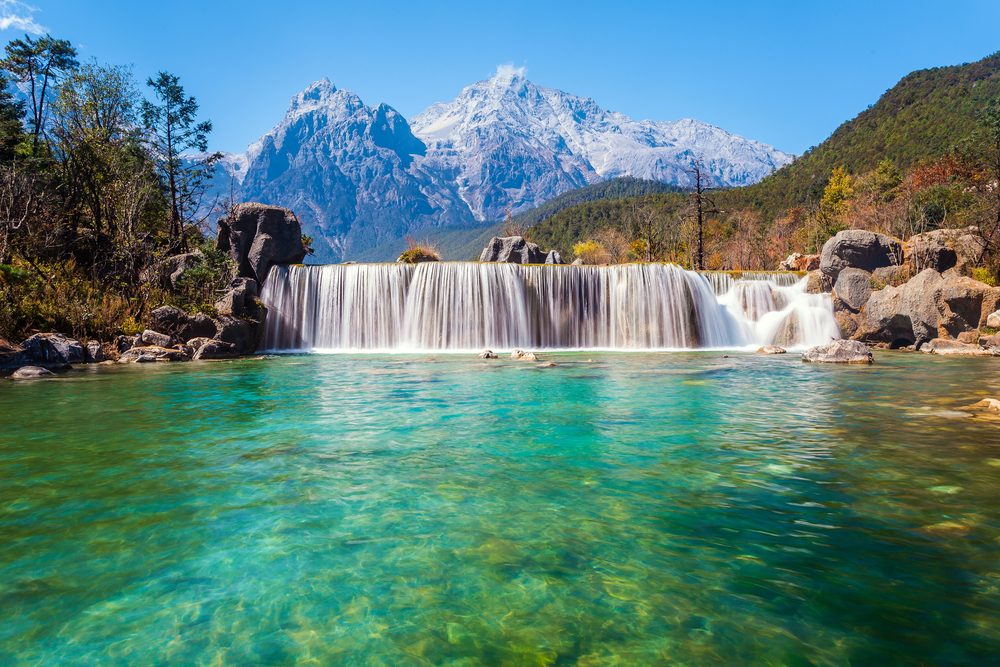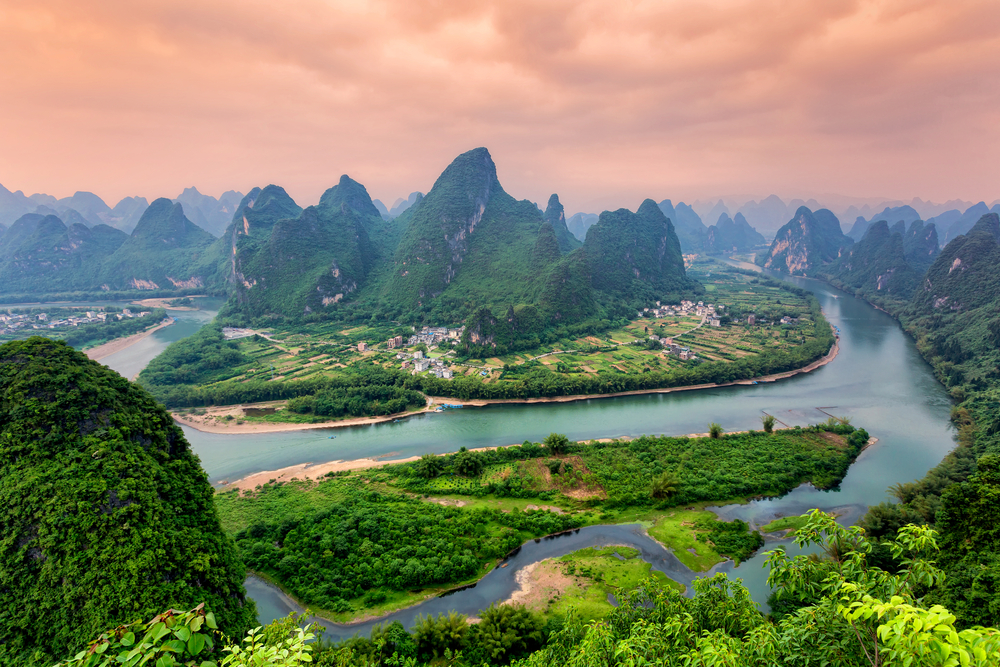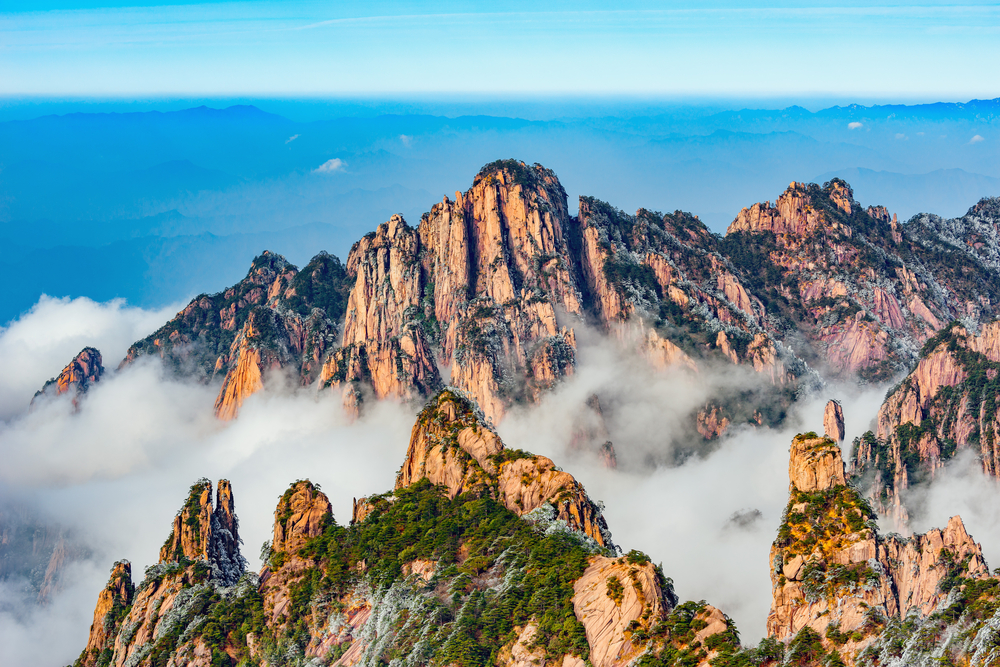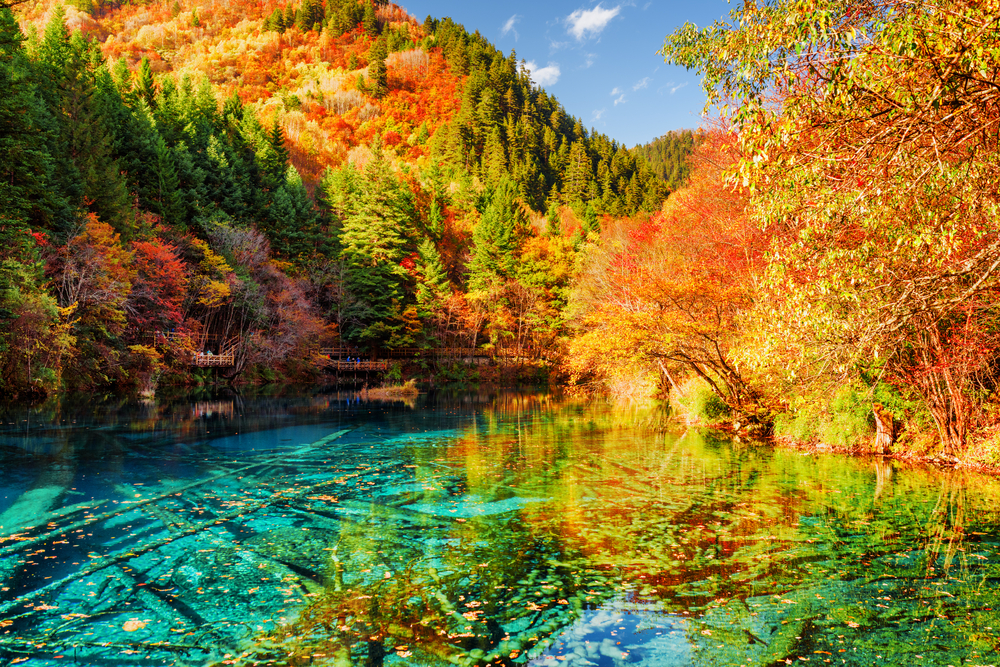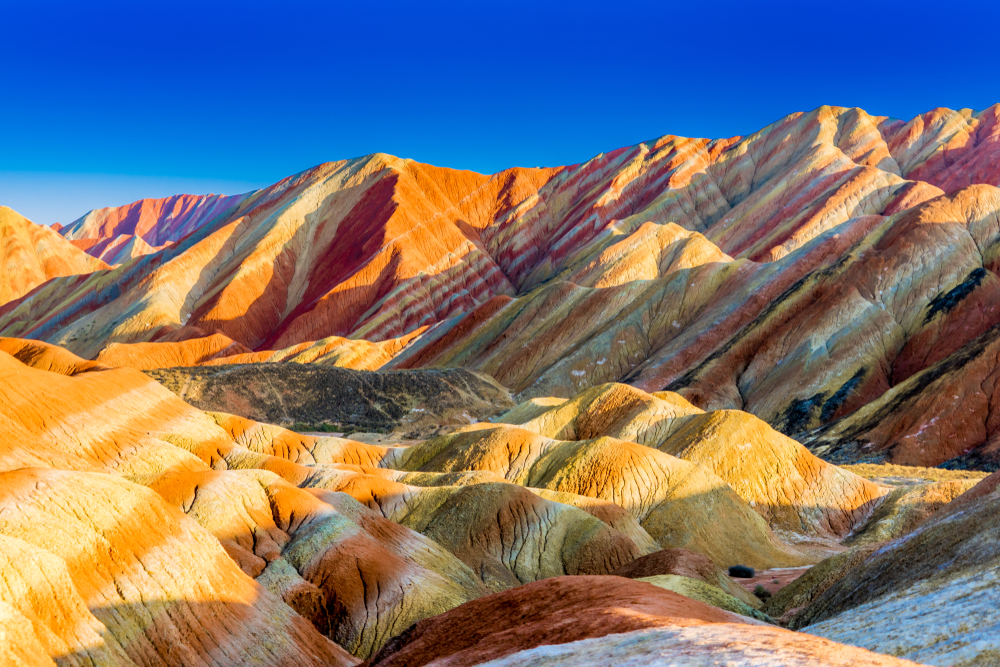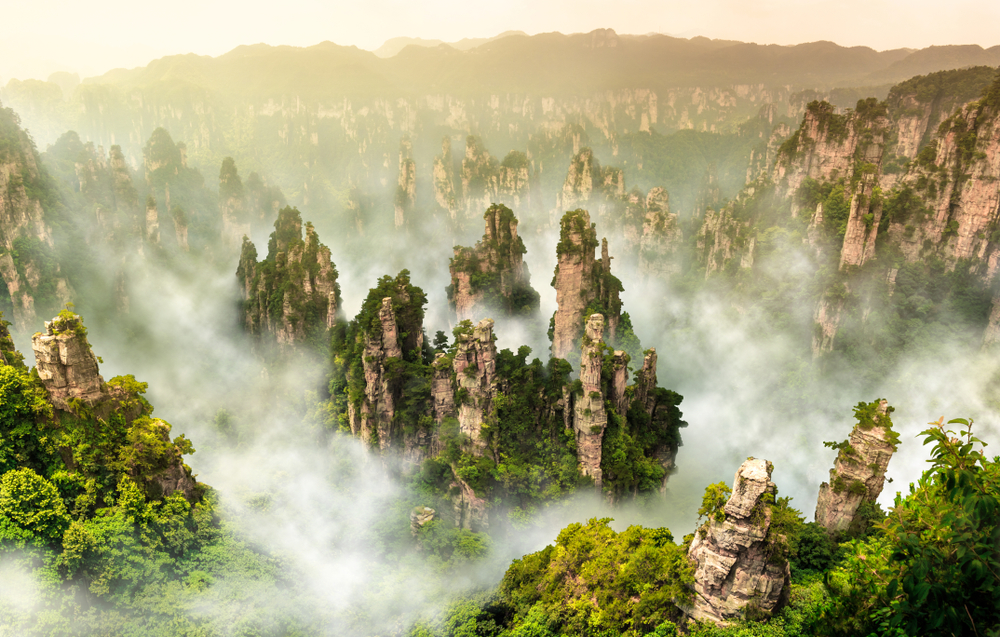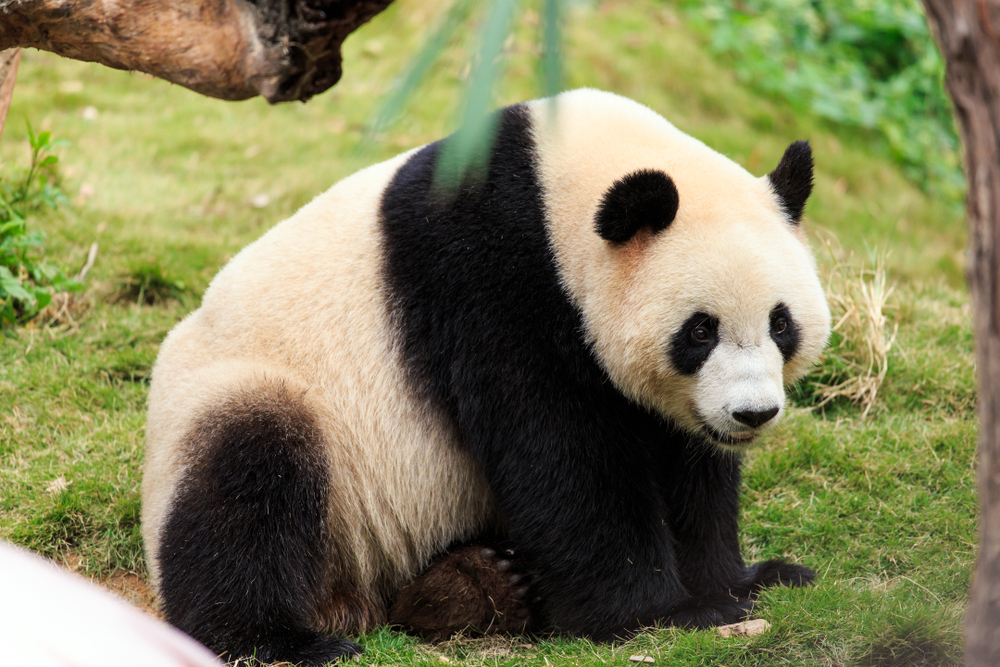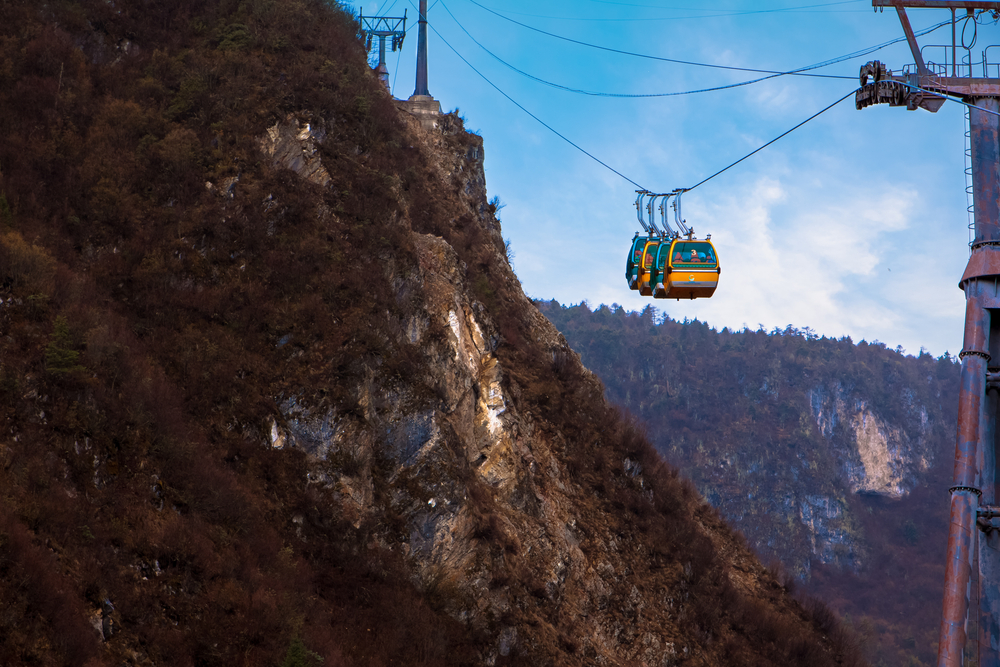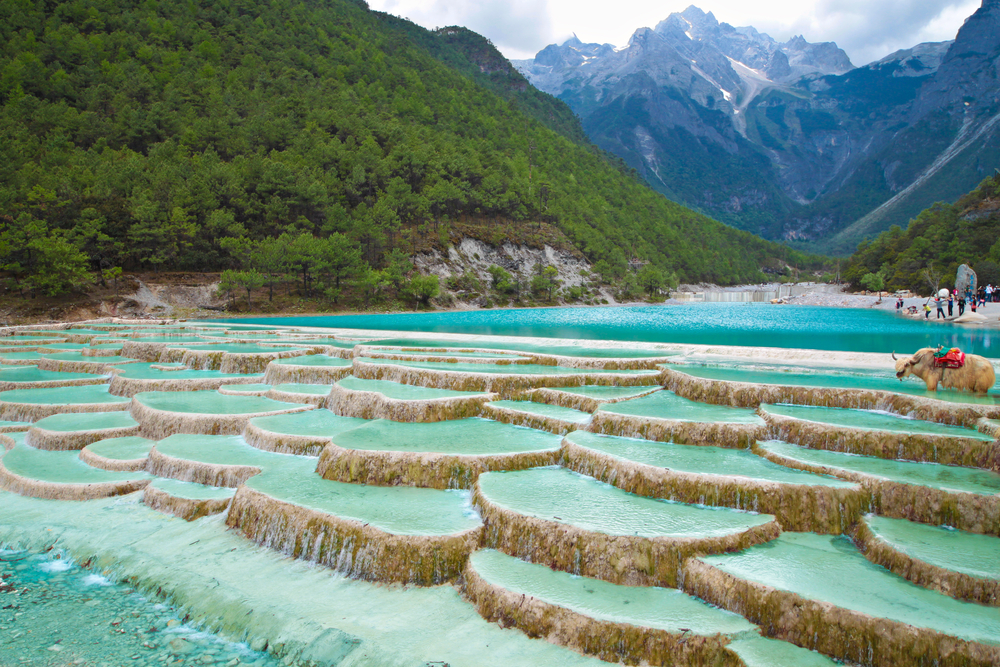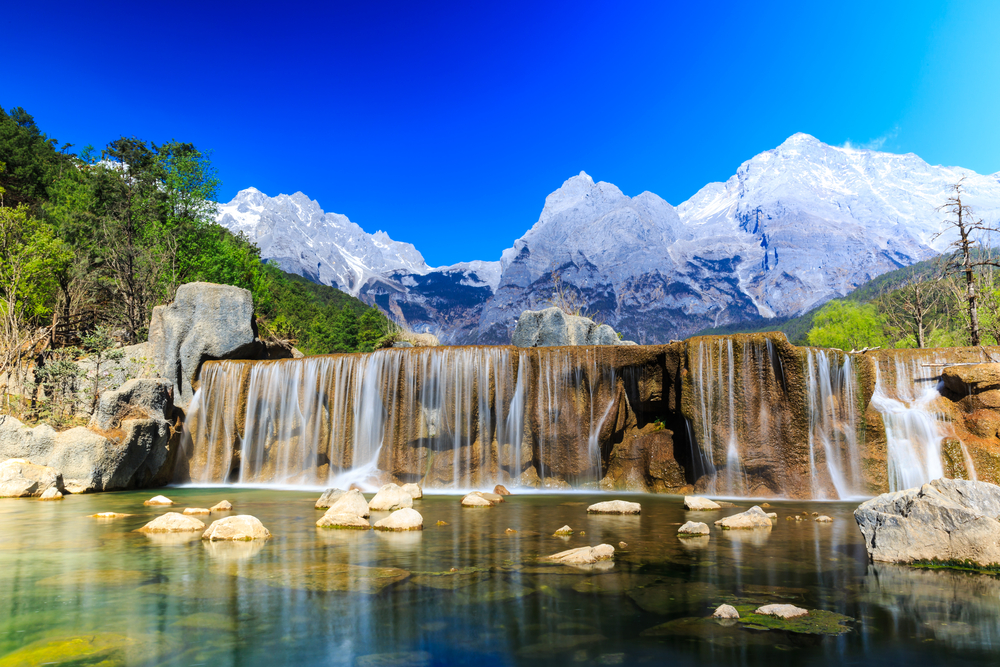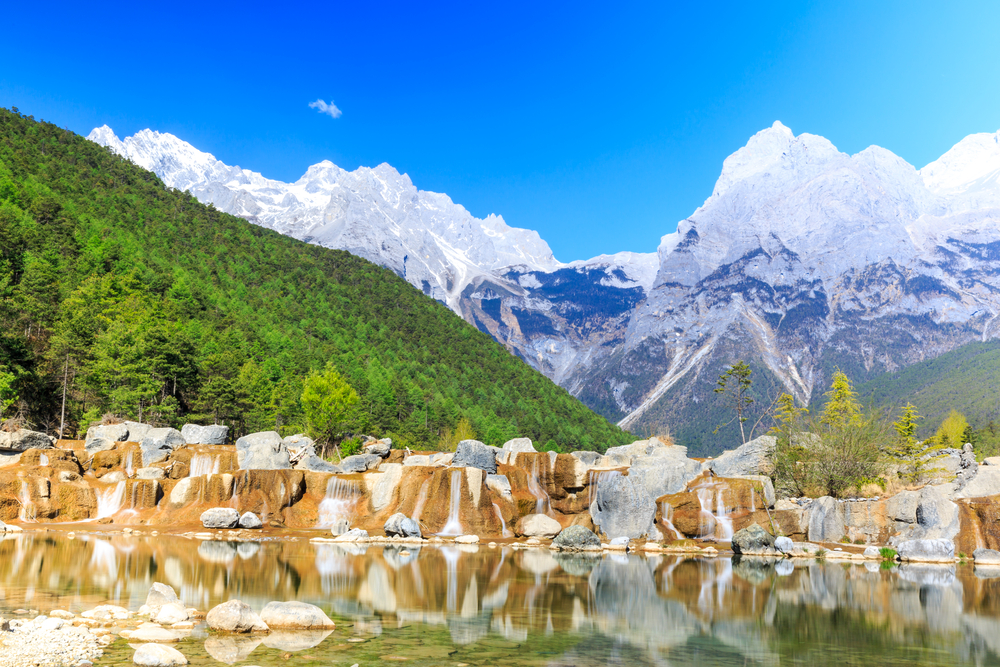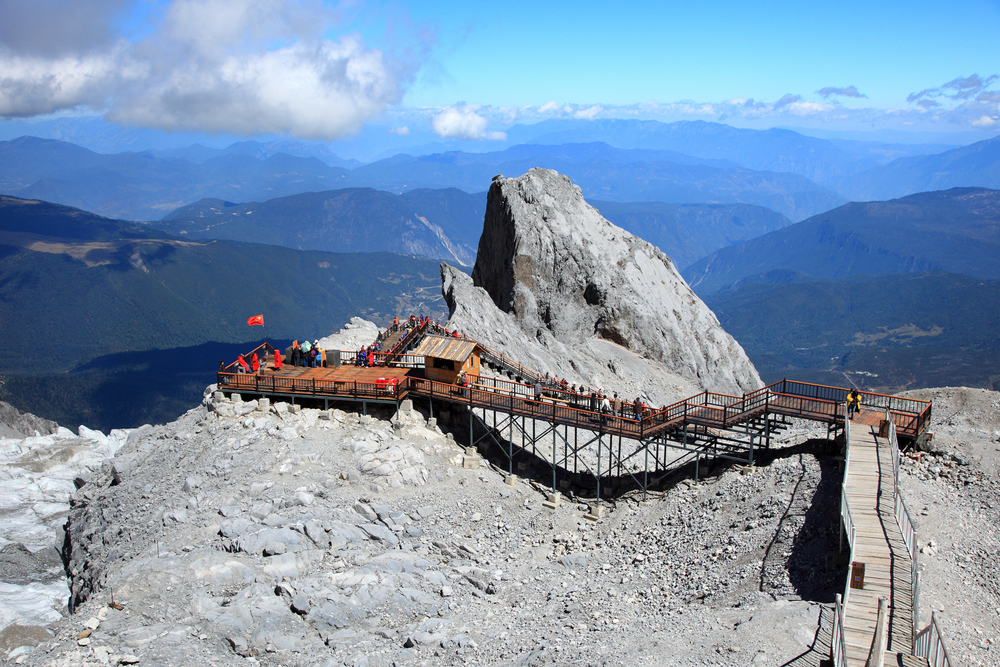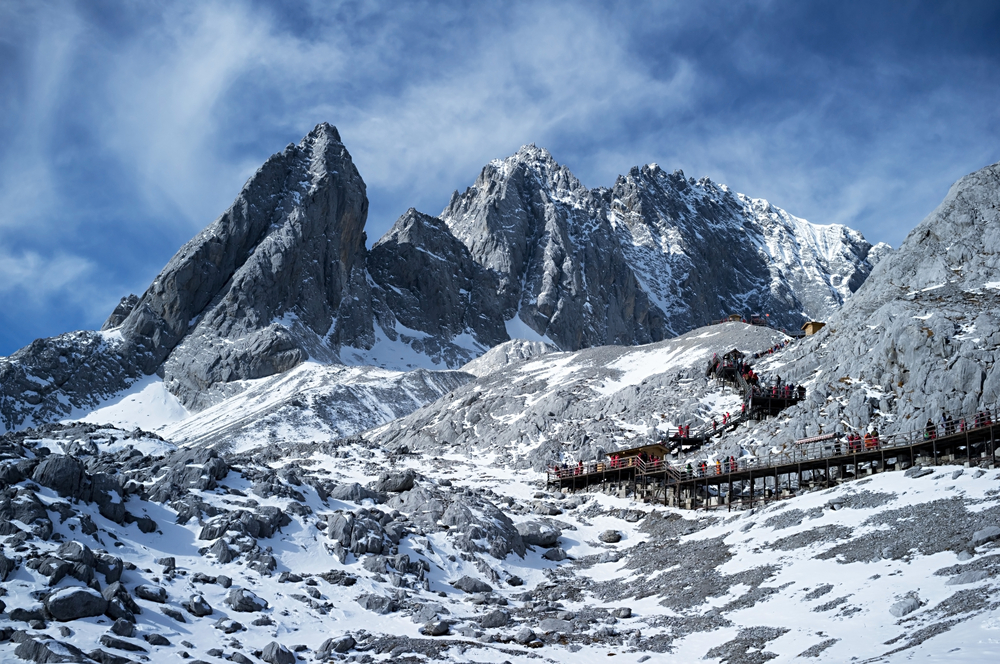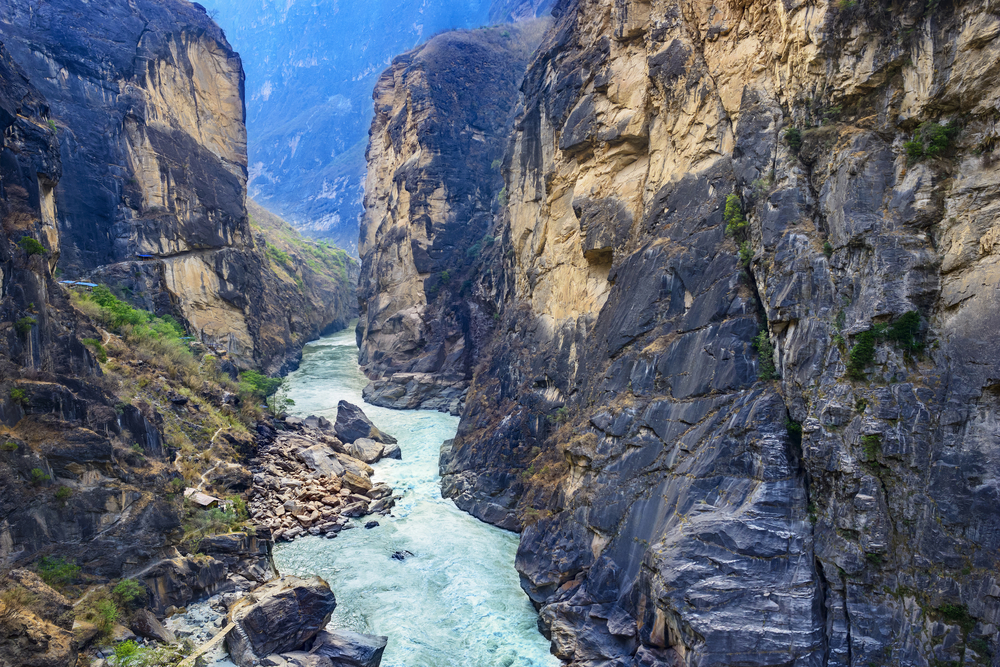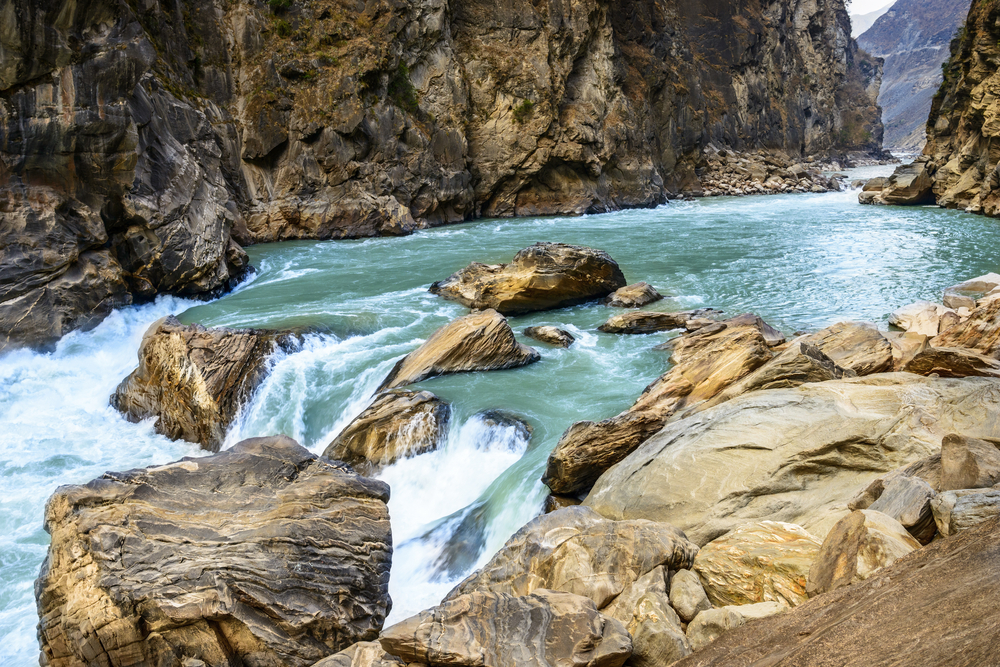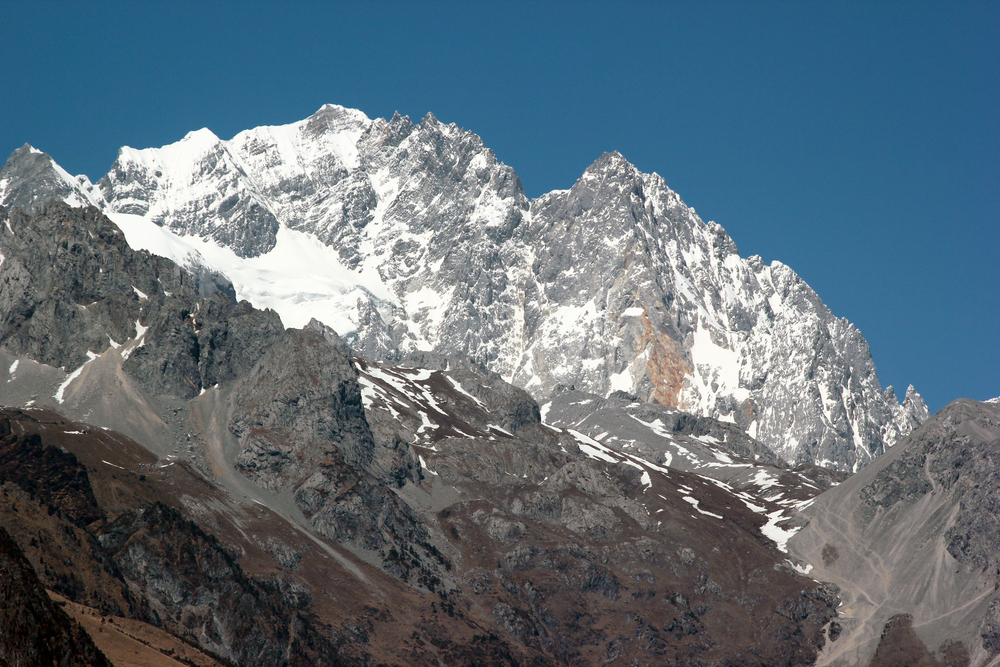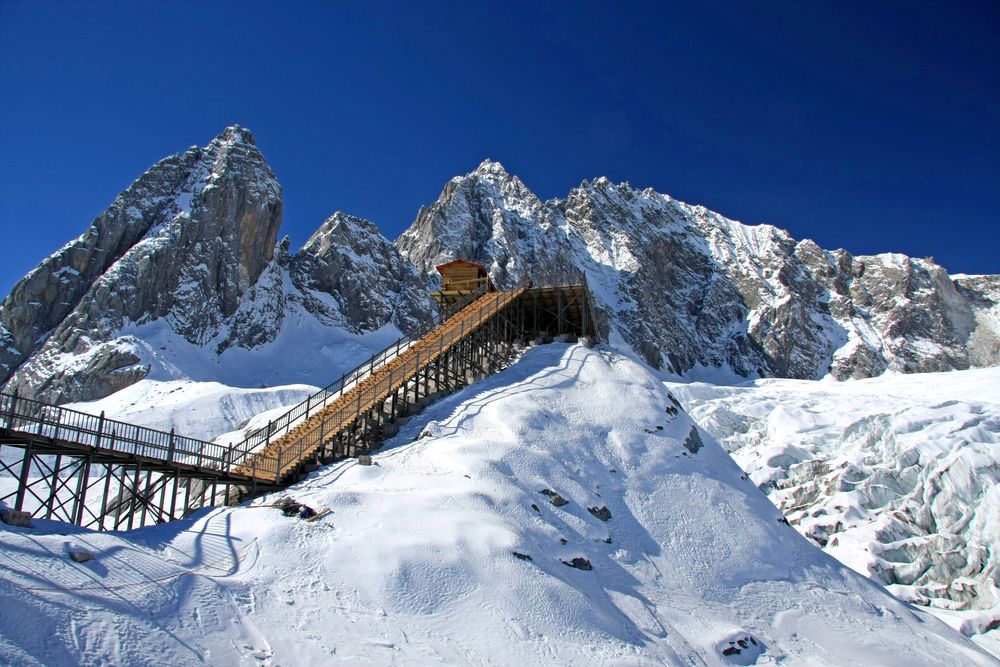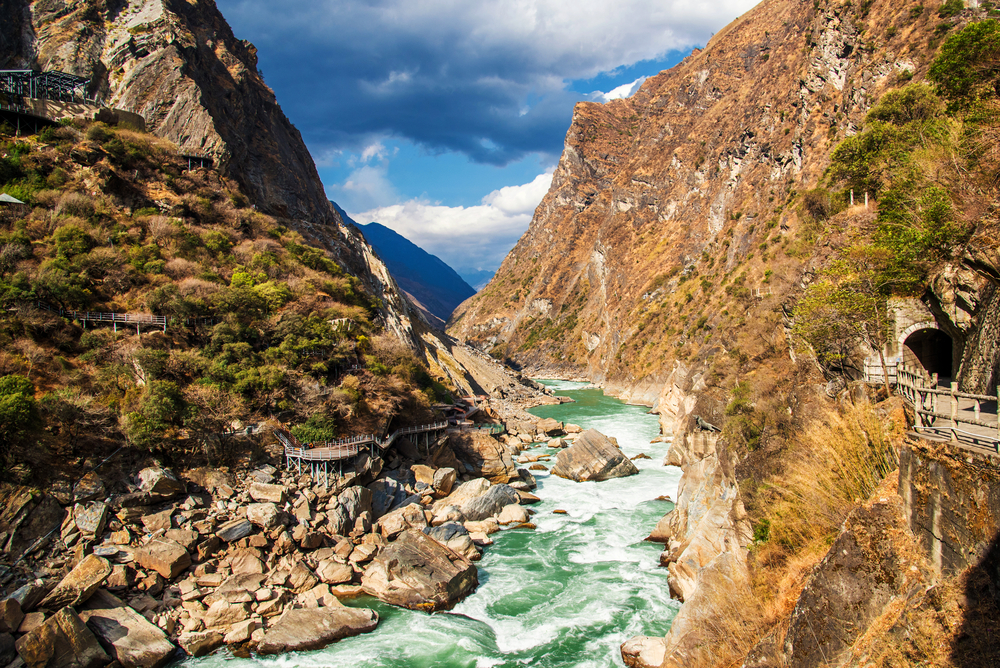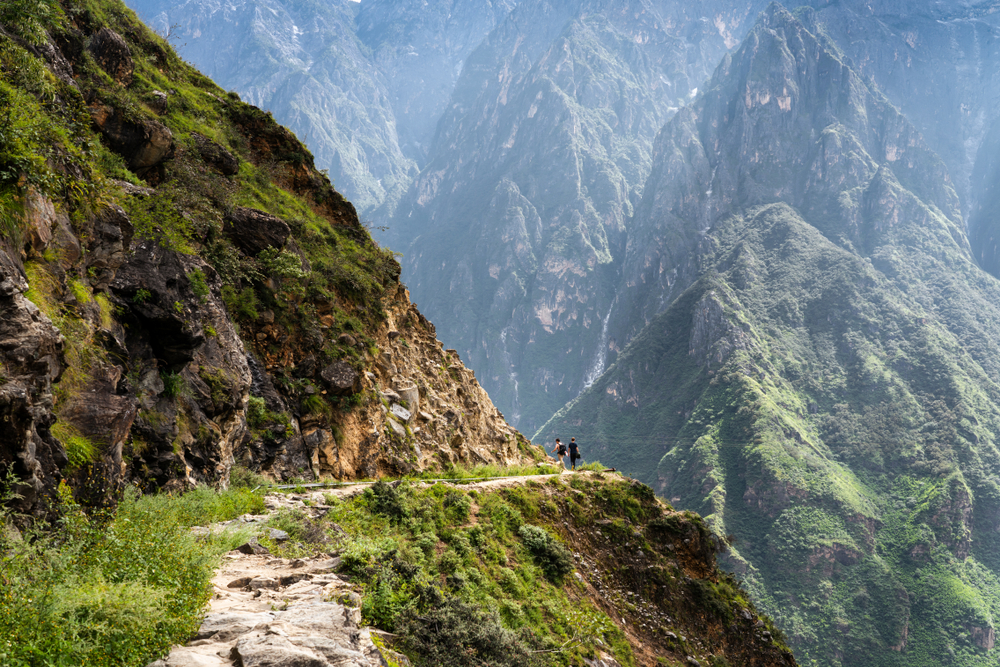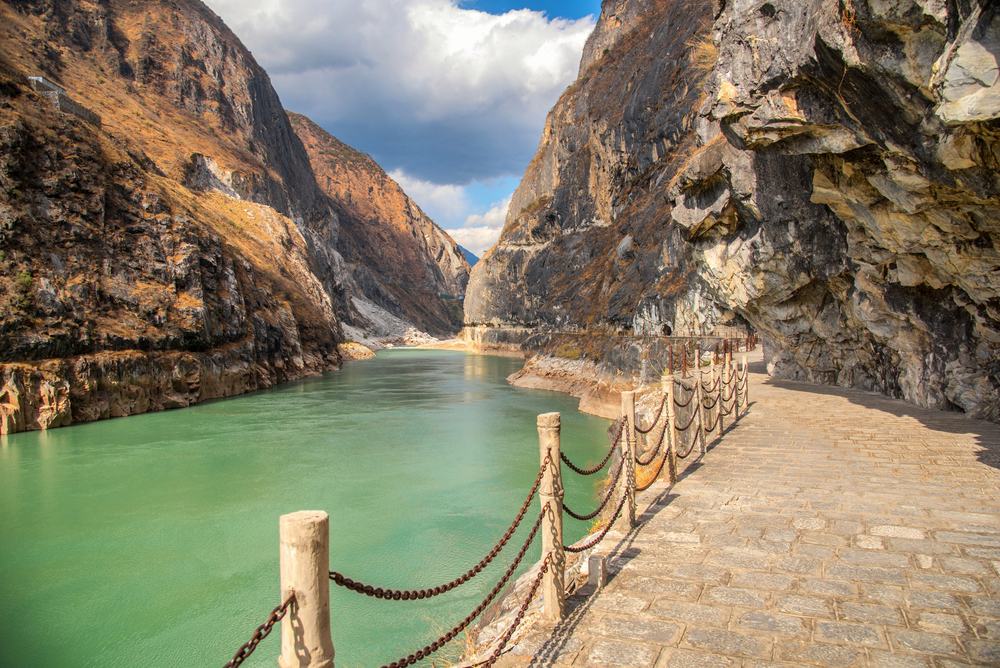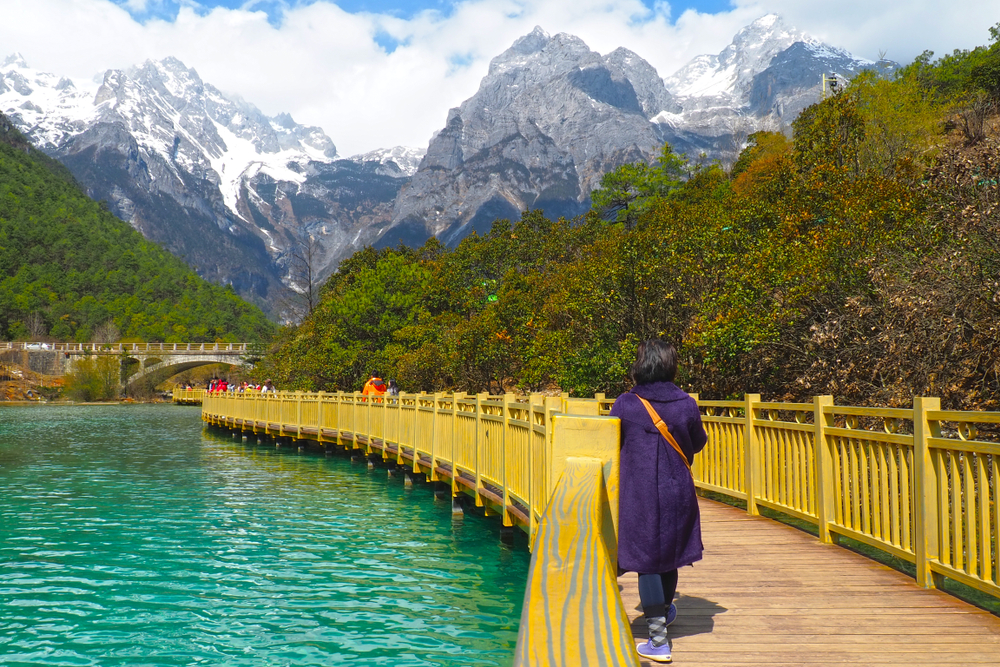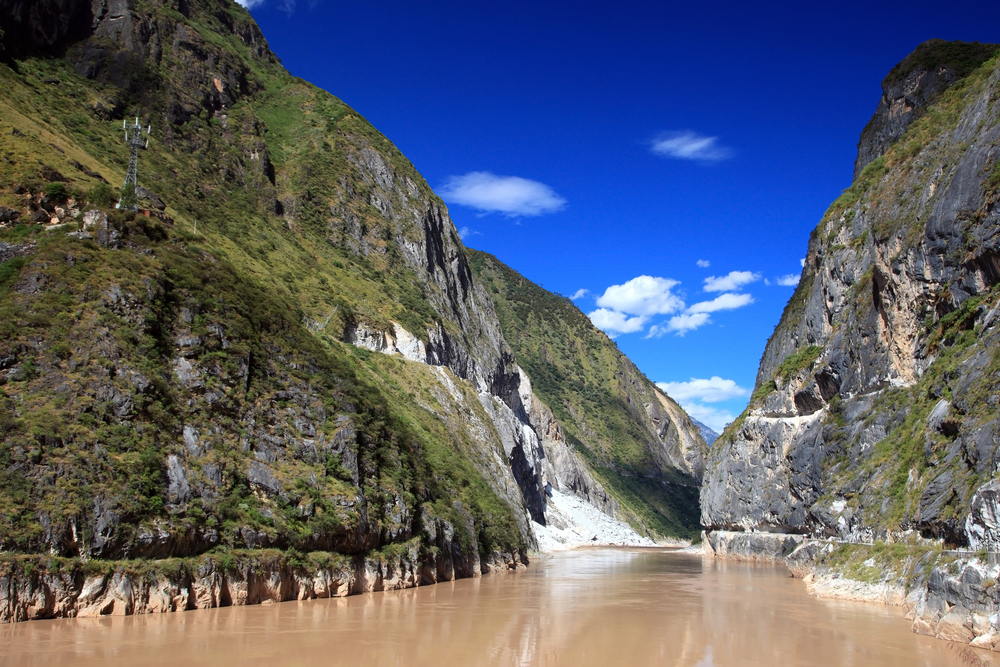Jade Dragon Snow Mountain Overview
Jade Dragon Snow Mountain (Yulong Snow Mountain) National Park, situated in the Yunnan Province of southwestern China, near Lijiang, is a majestic natural wonder that captivates visitors with its breathtaking beauty and cultural significance. The park covers an area of about 960 square kilometers (approximately 370 square miles), dominated by the towering Jade Dragon Snow Mountain, which stretches over 35 kilometers (22 miles) and comprises 13 peaks. The highest peak, Shanzidou, reaches an impressive altitude of 5,596 meters (18,360 feet) above sea level, though it remains unconquered by climbers due to its treacherous conditions.
This magnificent mountain range is not only a natural marvel but also holds profound cultural importance for the Naxi people, an ethnic minority group in China. The Naxi consider the mountain to be a sacred guardian and an embodiment of their deity, Sanduo. The park’s diverse landscape includes glacier-capped peaks, verdant valleys, alpine meadows, and lush forests, providing a habitat for a wide range of plant and animal species, some of which are endemic to the region.
Jade Dragon Snow Mountain National Park offers a variety of outdoor activities and attractions for visitors. The Blue Moon Valley and the Yak Meadow are among the most popular sites, offering stunning views of the mountain’s glaciers and vibrant wildflowers. The park also features the impressive Baishui River, which is fed by the mountain’s snowmelt, creating a series of cascading waterfalls and crystal-clear lakes.
For those looking to explore the mountain’s natural beauty and cultural heritage, the park provides cable cars that ascend to the glacier park, allowing visitors to experience breathtaking panoramic views of the mountain and its surroundings. Additionally, the Impression Lijiang, a performance directed by the famous Chinese filmmaker Zhang Yimou, showcases the rich cultural traditions of the Naxi people against the backdrop of the Jade Dragon Snow Mountain, offering a unique blend of natural beauty and cultural storytelling.
Jade Dragon Snow Mountain National Park is a destination of unparalleled beauty, offering a glimpse into the diverse ecosystems and rich cultural heritage of Yunnan Province, making it a must-visit for nature lovers, adventurers, and those interested in the cultural traditions of China’s ethnic minority groups.
Park Map
Jade Dragon Snow Mountain National Park Highlights
Engaging Jade Dragon Snow Mountain
Jade Dragon Snow Mountain National Park Trails
Sources
- China Highlights, Jade Dragon Snow Mountain, https://www.chinahighlights.com/lijiang/attraction/jade-dragon-snow-mountain.htm, retrieved April 2024.
- Lonely Planet, Jade Dragon Snow Mountain, https://www.lonelyplanet.com/china/lijiang/attractions/jade-dragon-snow-mountain/a/poi-sig/1543745/356164, retrieved April 2024.
- Travel China Guide, Jade Dragon Snow Mountain, https://www.travelchinaguide.com/attraction/yunnan/lijiang/jade_dragon.htm, retrieved April 2024.
- Visit Our China, Yulong Snow Mountain, http://www.visitourchina.com/lijiang/attraction/yulong-snow-mountain.html, retrieved April 2024.
- unnan Adventure Travel, Jade Dragon Snow Mountain, Lijiang, http://www.yunnanadventure.com/index.php/Attraction/show/id/285.html, retrieved April 2024.








































































